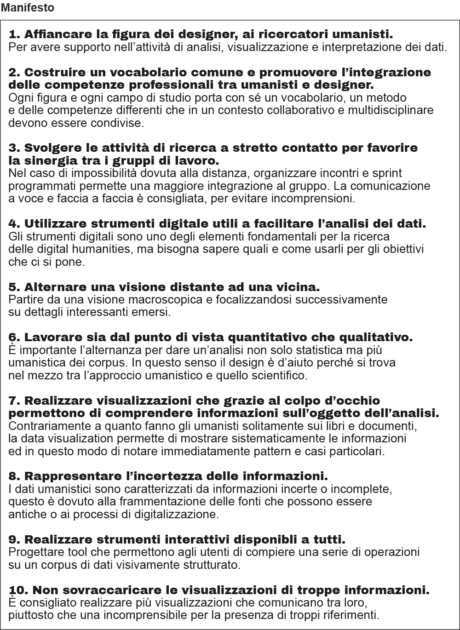
Introduction
In the context of the humanities, the last twenty years have been fundamental for a technological revolution mainly linked to the creation of digital tools useful for literary research. Digital and IT tools have largely influenced the production and dissemination of academic research. The designers found themselves collaborating with the researchers both in the creation of these tools and interfaces for analysis, and in the production and interpretation of the results obtained through these tools. Specifically, interdisciplinary collaborations between humanists and designers have been strengthened, bringing benefits to academic research both in the realization and interpretation of results. Reference is made to the ability of the communication designer to highlight patterns and recurrences within the corpus and to stimulate reflection thanks to the use of Information Design. Although it is a common idea that design produces significant advantages for literary studies, the field of design and that of Digital Humanities still appear to be two distinct environments: referring to the analysis of the literature of these sectors these collaborations are considered fundamental, but through the results of census carried out on a pool of research centers in the field of Digital Humanities (DH) these do not emerge as so frequent.
In this thesis we propose an investigation of the link between design and Digital Humanities at different levels.
–
Analysis
As a first step, an introductory analysis was carried out through the tool of Seealsology, not linked to the literature sector, to understand how DH and design interconnect with each other. Subsequently through a census of research centers that deal with Digital Humanities around the world, their relationship with design is investigated.
Finally, a retrospective review of some projects carried out by the DensityDesign Research Lab of the Politecnico di Milano in the field of Digital Humanities is proposed. Of these case studies the working methods, the subjects involved, the results obtained and the structuring of the work phases are investigated with the help of an ad hoc analysis grid. This grid (research design) is composed of a series of activities divided into phases and sub-phases related to the development of a project. It is useful for an analysis activity that takes into consideration tools and methodologies applied in the various case studies, making it possible to compare them.

 –
–
Case study: Atlante Calvino
The same method of analysis was applied in parallel with a project in progress: “Atlante Calvino: letteratura e visualizzazione”. The project comes from a collaboration with the literary team of the Italian Unit of the Department of Languages and Literatures of the University of Geneva and the DensityDesign Lab of the Politecnico di Milano. The project consists of a series of in-depth research on the entire work of the Italian author Italo Calvino.



–
Results
Through the comparison of all the case studies, the final objective of this thesis is to analyze and systematize the hybrid work that combines the scientific and humanistic component of the Digital Humanities, defining a Manifesto that contains recommendations for future projects in the field of DH.



